Santanu Chaudhuri
Civil, Materials, and Environmental Engineering Department, University of Illinois at Chicago, IL, United States, Argonne National Laboratory, Lemont, IL, United States
MOFA: Discovering Materials for Carbon Capture with a GenAI- and Simulation-Based Workflow
Jan 18, 2025Abstract:We present MOFA, an open-source generative AI (GenAI) plus simulation workflow for high-throughput generation of metal-organic frameworks (MOFs) on large-scale high-performance computing (HPC) systems. MOFA addresses key challenges in integrating GPU-accelerated computing for GPU-intensive GenAI tasks, including distributed training and inference, alongside CPU- and GPU-optimized tasks for screening and filtering AI-generated MOFs using molecular dynamics, density functional theory, and Monte Carlo simulations. These heterogeneous tasks are unified within an online learning framework that optimizes the utilization of available CPU and GPU resources across HPC systems. Performance metrics from a 450-node (14,400 AMD Zen 3 CPUs + 1800 NVIDIA A100 GPUs) supercomputer run demonstrate that MOFA achieves high-throughput generation of novel MOF structures, with CO$_2$ adsorption capacities ranking among the top 10 in the hypothetical MOF (hMOF) dataset. Furthermore, the production of high-quality MOFs exhibits a linear relationship with the number of nodes utilized. The modular architecture of MOFA will facilitate its integration into other scientific applications that dynamically combine GenAI with large-scale simulations.
GHP-MOFassemble: Diffusion modeling, high throughput screening, and molecular dynamics for rational discovery of novel metal-organic frameworks for carbon capture at scale
Jun 14, 2023Abstract:We introduce GHP-MOFassemble, a Generative artificial intelligence (AI), High Performance framework to accelerate the rational design of metal-organic frameworks (MOFs) with high CO2 capacity and synthesizable linkers. Our framework combines a diffusion model, a class of generative AI, to generate novel linkers that are assembled with one of three pre-selected nodes into MOFs in a primitive cubic (pcu) topology. The CO2 capacities of these AI-generated MOFs are predicted using a modified version of the crystal graph convolutional neural network model. We then use the LAMMPS code to perform molecular dynamics simulations to relax the AI-generated MOF structures, and identify those that converge to stable structures, and maintain their porous properties throughout the simulations. Among 120,000 pcu MOF candidates generated by the GHP-MOFassemble framework, with three distinct metal nodes (Cu paddlewheel, Zn paddlewheel, Zn tetramer), a total of 102 structures completed molecular dynamics simulations at 1 bar with predicted CO2 capacity higher than 2 mmol/g at 0.1 bar, which corresponds to the top 5% of hMOFs in the hypothetical MOF (hMOF) dataset in the MOFX-DB database. Among these candidates, 18 have change in density lower than 1% during molecular dynamics simulations, indicating their stability. We also found that the top five GHP-MOFassemble's MOF structures have CO2 capacities higher than 96.9% of hMOF structures. This new approach combines generative AI, graph modeling, large-scale molecular dynamics simulations, and extreme scale computing to open up new pathways for the accelerated discovery of novel MOF structures at scale.
A framework for fully autonomous design of materials via multiobjective optimization and active learning: challenges and next steps
Apr 15, 2023Abstract:In order to deploy machine learning in a real-world self-driving laboratory where data acquisition is costly and there are multiple competing design criteria, systems need to be able to intelligently sample while balancing performance trade-offs and constraints. For these reasons, we present an active learning process based on multiobjective black-box optimization with continuously updated machine learning models. This workflow is built on open-source technologies for real-time data streaming and modular multiobjective optimization software development. We demonstrate a proof of concept for this workflow through the autonomous operation of a continuous-flow chemistry laboratory, which identifies ideal manufacturing conditions for the electrolyte 2,2,2-trifluoroethyl methyl carbonate.
End-to-end AI Framework for Hyperparameter Optimization, Model Training, and Interpretable Inference for Molecules and Crystals
Dec 21, 2022Abstract:We introduce an end-to-end computational framework that enables hyperparameter optimization with the DeepHyper library, accelerated training, and interpretable AI inference with a suite of state-of-the-art AI models, including CGCNN, PhysNet, SchNet, MPNN, MPNN-transformer, and TorchMD-Net. We use these AI models and the benchmark QM9, hMOF, and MD17 datasets to showcase the prediction of user-specified materials properties in modern computing environments, and to demonstrate translational applications for the modeling of small molecules, crystals and metal organic frameworks with a unified, stand-alone framework. We deployed and tested this framework in the ThetaGPU supercomputer at the Argonne Leadership Computing Facility, and the Delta supercomputer at the National Center for Supercomputing Applications to provide researchers with modern tools to conduct accelerated AI-driven discovery in leadership class computing environments.
Physics-Informed Bayesian Learning of Electrohydrodynamic Polymer Jet Printing Dynamics
Apr 16, 2022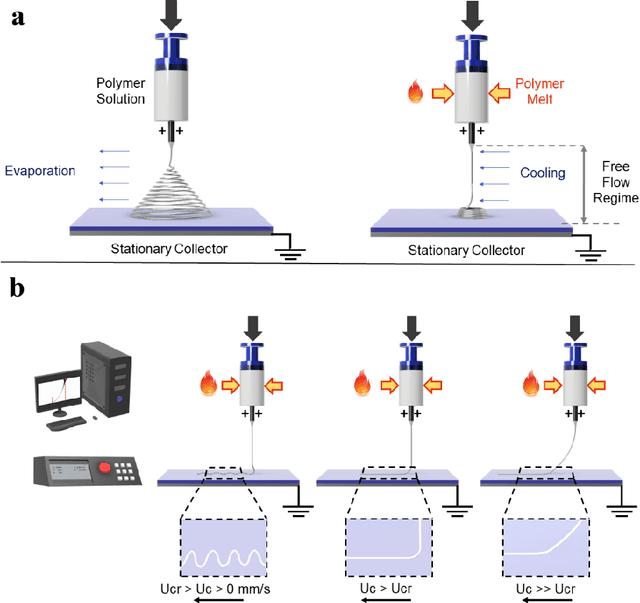
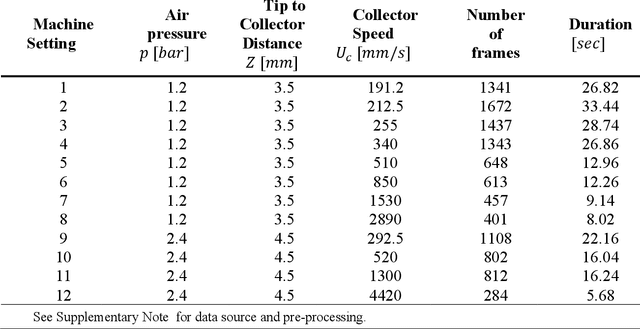
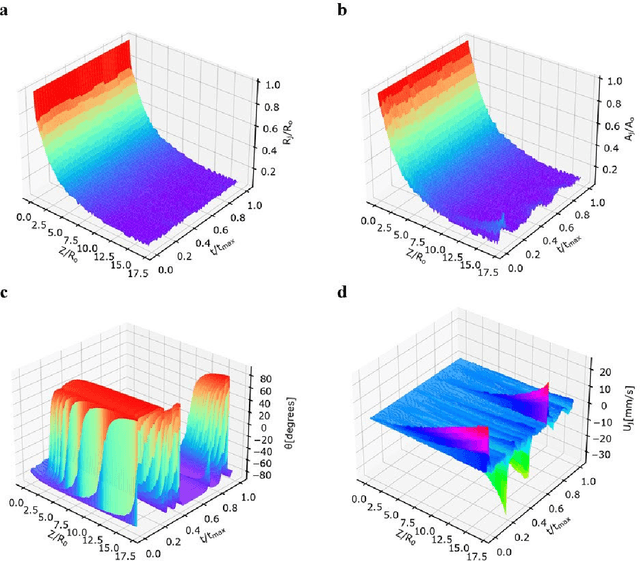
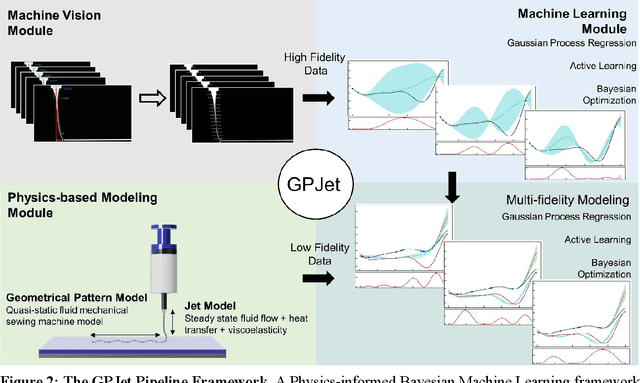
Abstract:Calibration of highly dynamic multi-physics manufacturing processes such as electro-hydrodynamics-based additive manufacturing (AM) technologies (E-jet printing) is still performed by labor-intensive trial-and-error practices. These practices have hindered the broad adoption of these technologies, demanding a new paradigm of self-calibrating E-jet printing machines. To address this need, we developed GPJet, an end-to-end physics-informed Bayesian learning framework, and tested it on a virtual E-jet printing machine with in-process jet monitoring capabilities. GPJet consists of three modules: a) the Machine Vision module, b) the Physics-Based Modeling Module, and c) the Machine Learning (ML) module. We demonstrate that the Machine Vision module can extract high-fidelity jet features in real-time from video data using an automated parallelized computer vision workflow. In addition, we show that the Machine Vision module, combined with the Physics-based modeling module, can act as closed-loop sensory feedback to the Machine Learning module of high- and low-fidelity data. Powered by our data-centric approach, we demonstrate that the online ML planner can actively learn the jet process dynamics using video and physics with minimum experimental cost. GPJet brings us one step closer to realizing the vision of intelligent AM machines that can efficiently search complex process-structure-property landscapes and create optimized material solutions for a wide range of applications at a fraction of the cost and speed.
Towards Online Steering of Flame Spray Pyrolysis Nanoparticle Synthesis
Oct 16, 2020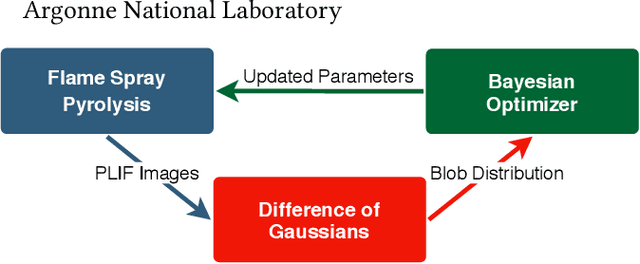
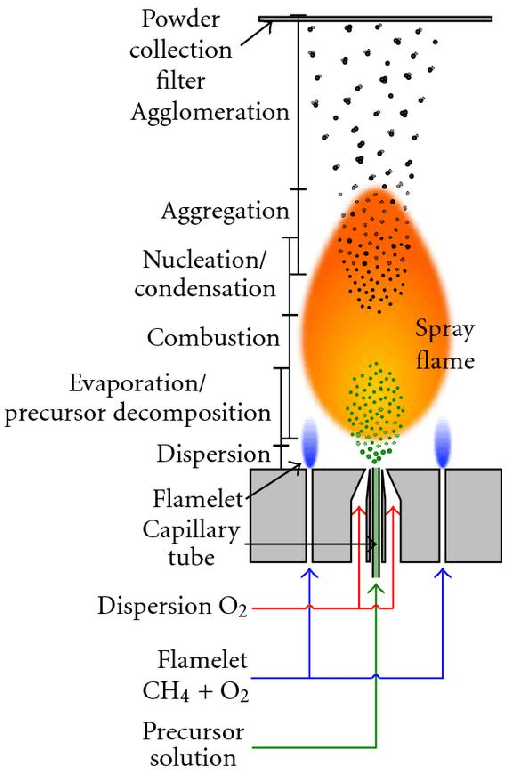

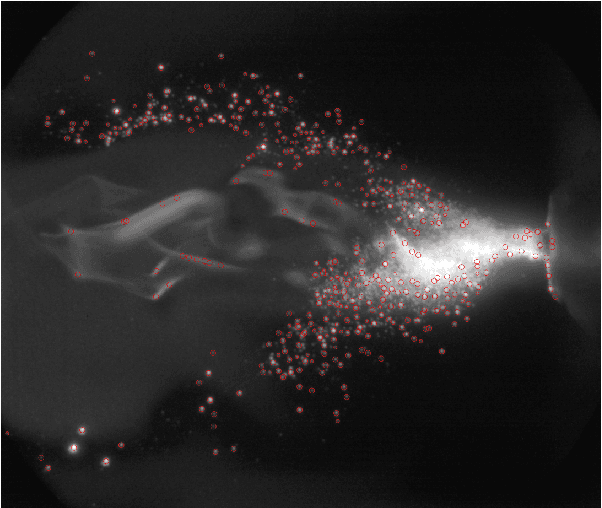
Abstract:Flame Spray Pyrolysis (FSP) is a manufacturing technique to mass produce engineered nanoparticles for applications in catalysis, energy materials, composites, and more. FSP instruments are highly dependent on a number of adjustable parameters, including fuel injection rate, fuel-oxygen mixtures, and temperature, which can greatly affect the quality, quantity, and properties of the yielded nanoparticles. Optimizing FSP synthesis requires monitoring, analyzing, characterizing, and modifying experimental conditions.Here, we propose a hybrid CPU-GPU Difference of Gaussians (DoG)method for characterizing the volume distribution of unburnt solution, so as to enable near-real-time optimization and steering of FSP experiments. Comparisons against standard implementations show our method to be an order of magnitude more efficient. This surrogate signal can be deployed as a component of an online end-to-end pipeline that maximizes the synthesis yield.
 Add to Chrome
Add to Chrome Add to Firefox
Add to Firefox Add to Edge
Add to Edge